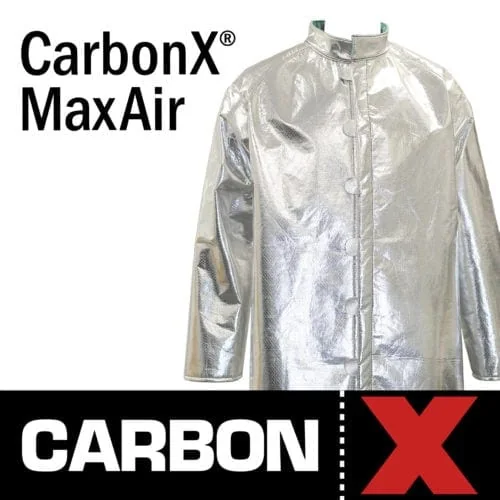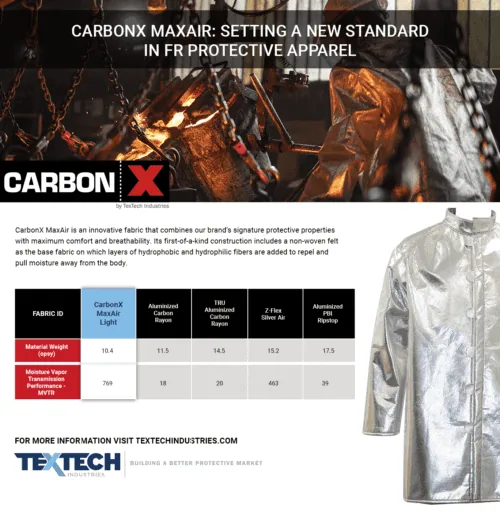Working in Extreme Environments
Aluminum and copper furnaces run between 1500-1700 °F, and steel furnaces run at temperatures above 3000 °F! In these extreme conditions, the Personal Protective Equipment (PPE) used must shield workers from the potential metal splash of these insanely hot materials, and they must also protect against the staggering amount of radiant heat that is generated by the metal and furnaces. Ideally, you would also like to keep those same workers comfortable, allowing them to safely complete their strenuous tasks while working in such extreme conditions.
How to Protect Against Molten Metal
The most widely used fabrics for protection against molten metal utilize a thin aluminum laminate on their surfaces. The aluminum exterior reflects much of the radiant heat generated by the metal and/or furnace, allowing personnel to work in close proximity to these industrial heat sources. Aluminized fabrics are the standard components for this type of exposure.
Our CarbonX FL-100A has been used for this very purpose for some time. CarbonX FL-100A is an aluminized fleeced knit that is lightweight and flexible, and therefore it is a relatively comfortable option for protection against metal splash. However, as with almost all other aluminized fabrics, the aluminum film used in laminating the outside of these fabrics is a solid layer, and therefore non-breathable.
What Is CarbonX Breathable Aluminized?
To create a more comfortable Aluminized Fabric, CarbonX Breathable Aluminized combines the level of protection one would expect in a CarbonX fabric while elevating the comfort aspects of the garment using two key factors: Moisture Wicking and Breathability.
To create a moisture wicking substrate, we’ve combined a multi-layer non-woven felt as the base fabric used in this fabric. One layer includes a layer of hydrophobic fibers, the other layer includes a layer of hydrophilic fibers. The hydrophobic fibers do not like moisture, while the hydrophilic fibers love moisture. The hydrophilic fibers are placed in the layer away from the skin, and because of their orientation in relation to the hydrophobic fibers and the wearer, they pull the sweat and moisture away from the body and to the outside of the garment. (side note…we’ve even added a strengthening scrim layer between those two layers of fibers to keep the fabric strong and durable!)
To give the garment breathability, we have used Tex Tech’s vast experience in needling technology to perforate the aluminum to create a breathability aspect to the aluminized surface. In simple terms, we’ve poked thousands of tiny holes in the surface of the fabric! When the moisture is wicked away from the body via the hydrophilic fibers it can then escape the holes on the surface of the aluminum. The airflow and the water evaporating after seeping through the holes as a dramatic cooling effect. The outdoor apparel industry has utilized this cooling process in soft-shell technology for jackets and coats for some time now, and now we are using the same method to keep our steel workers cool!
With All Those Holes, Does it Still Protect?
Of course it does!While the holes are small enough to allow air permeation, those holes are not large enough to significantly affect the level of radiant heat protection that the outer layer of aluminum provides.Likewise, when exposed to molten splash, the holes are small enough and the metal splash hot enough that the holes seal when hit with molten metal.The perforated fabrics still meet the ASTM F 955 standard, which is the “Standard Test Method for Evaluating Heat Transfer for Protective Clothing Upon Contact with Molten Substances.”
The CarbonX Breathable Aluminized fabric provides an unmatched level of comfort in an aluminized garment using breathability and moisture wicking to add to CarbonX level protection!

